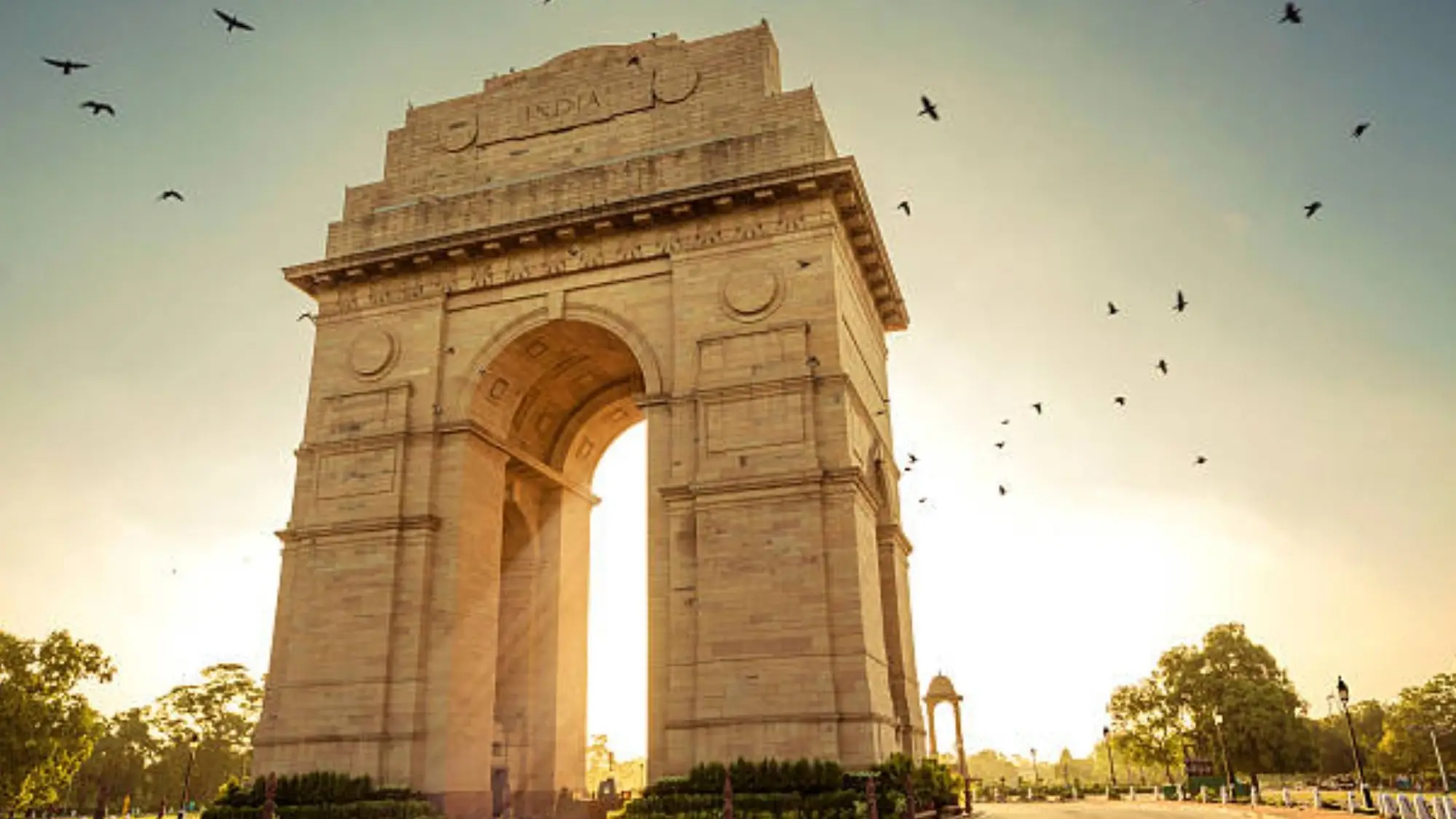By Gunjan Rajput
Copyright republicworld

New Delhi’s hospitality market has emerged as India’s biggest success story in 2025. According to HVS-ANAROCK, the capital clocked occupancy at 78–80% in April 2025, just behind Mumbai’s 79–81%. At the same time, the average daily rate (ADR) exceeded Rs 10,500, making Delhi one of the most premium hotel markets in the country.This isn’t just a statistical uptick, it’s a structural shift. Colliers’ Asia Pacific Hospitality Insights May 2025 highlights that “India is driving a structural shift in Asia Pacific’s hospitality landscape, fueling resilient domestic growth while emerging as a powerful outbound force”.Why Delhi Is Pulling AheadDelhi’s hotel market is benefiting from the overlap of multiple demand streams:Corporate and government travel.MICE events (conferences, trade fairs, exhibitions).Weddings and large social gatherings.Growing domestic leisure and cultural tourism.Saumitra Chaturvedi, GM of Novotel New Delhi City Centre, put it simply: “Delhi’s strong performance is being driven by a healthy mix of corporate recovery and growing leisure demand. Conventions, large-scale exhibitions, and diplomatic activity have come back in force, supported by world-class venues such as Bharat Mandapam, Yashobhoomi, and Noida Expo Centre. At the same time, domestic travellers are increasingly blending work with leisure, extending their stays to explore Delhi’s cultural and historic richness. Together, these demand drivers have helped sustain both occupancy and premium ADRs through the year.”The Rate Game: Making Premium Pricing StickWhat sets Delhi apart is its ability to charge more while staying full. Across Asia Pacific, Colliers notes that RevPAR grew 2.1% year-on-year in Q1 2025, primarily due to ADR growth rather than a big rise in occupancy. Delhi mirrors this global trend.Govinda Singh, Executive Director, Colliers APAC, explained: “The next phase of growth will hinge on driving occupancy, operational precision and guest experience, especially as supply remains measured given high construction costs.”For hotels, this means they cannot take rising rates for granted. Chaturvedi echoed this: “In a price-sensitive market like India, the key to balancing premium rates lies in making value visible at every stage of the guest journey. Indian travellers are highly discerning and evaluate every detail against the price they pay.”Operational Pressures Behind the BoomWith high performance comes pressure. Chaturvedi admitted that staffing is his biggest challenge: “Hospitality relies on people, and sustaining warmth and consistency during peak demand requires continuous training, motivation, and hands-on leadership. Rising costs, especially in food and energy, also demand careful management.”He added that guest feedback has become a daily operational compass: “We review it every day, which allows us to identify gaps quickly and act with agility.”How Delhi Stacks Up: Mumbai and Jaipur in ContextMumbai: Still leads with ADRs above Rs 11,500. Its strength is corporate travel and luxury leisure, but Delhi is catching up fast, thanks to diplomacy, weddings, and conventions.Jaipur: Has the fastest ADR growth (19–21%) from a lower base. The city thrives on heritage tourism but lacks Delhi’s stability and year-round demand.This balance, experts say, is Delhi’s ace card. Sunny Katyal, Co-Founder, Investors Clinic, argued: “Delhi isn’t dependent on just one demand driver. Business travel, government activity, MICE events, and leisure all overlap here. Unlike seasonal markets, Delhi’s demand is year-round, making it very attractive for investors. We don’t view this as overvaluation, it’s backed by strong fundamentals.”The Goa Contrast: Leisure vs. CorporateGoa offers a sharp contrast. Harish Gopalakrishnan, GM of The Westin Goa, said: “In a leisure-led destination like Goa, pricing power is derived from the quality of experiences rather than volume-driven corporate demand. While Delhi maintains steady occupancy through business travel, Goa sustains premium positioning by offering a blend of wellness, culture, gastronomy, and entertainment.”On seasonality, he added: “Unlike Delhi, where occupancy is consistent, Goa experiences peaks during festive periods, long weekends, and the wedding season. The off-season has become an opportunity rather than a challenge… we attract families, wellness seekers, and guests looking to experience Goa beyond beaches.”Consultants See Delhi as an Investment MagnetConsultants are bullish about Delhi’s future.Taran Chhabra, Director at SKYE Hospitality, noted multiple drivers: “Delhi NCR is the second-biggest business market in India after Mumbai, which naturally drives MICE, trade fairs, and retreats. It is also the political centre, adding government and diplomatic travel. Weddings are huge, FY26 has 68 muhurta dates, which will fuel occupancy and ADR growth.”Chhabra also highlighted feeder markets: “Faridabad, Gurgaon, Ghaziabad, Noida, and Jewar are instrumental. The upcoming Noida International Airport will be a game-changer. Already, seven major hotel brands have signed MOUs to operate from Jewar. Hyatt is launching a new premium project in Ghaziabad. By 2028, we expect close to USD 1 billion in hotel investments.”Katyal of Investors Clinic added that Tier-II and Tier-III travellers are now a force: “What’s interesting is how Tier-II and Tier-III cities are becoming feeder markets, with more travellers from these regions boosting Delhi’s pipeline and strengthening its position as India’s hottest hospitality hub.”Investors Stay Confident Despite Global SlowdownColliers noted that while Asia Pacific hotel deal volumes fell 19% in Q1 2025 , India remains attractive because valuations are resilient. Nikhil Shah, Managing Director, Colliers Hospitality & Alternatives, said: “With strong demand across luxury, lifestyle and MICE segments, and rising investor confidence in experience-led assets, India is now central to regional tourism flows, sustaining premium pricing and reshaping travel dynamics.”This confidence is mirrored in Delhi, where investors see less “froth” and more structural strength.The Road Ahead for DelhiDelhi has cracked the hard formula, full rooms and high rates. But the question now is: can it last?Risks: Staffing crunches, rising costs, potential “rate fatigue” among domestic travellers.Opportunities: New feeder markets, Noida International Airport, growth in weddings and MICE.Investor view: Fundamentals strong, capital inflows expected to rise.Chaturvedi summed it up well: “As long as we uphold the promise of trust and consistency, I am confident today’s rate levels can be sustained without eroding guest loyalty.”And as Gopalakrishnan of Westin Goa added: “Delhi highlights the value of stability and scale, while Goa demonstrates the strength of leisure-driven experiences. Together, the key insight is that guests today expect more than accommodation, they seek convenience, quality, and a sense of rejuvenation.”New Delhi’s hospitality market in 2025 isn’t just hot, it’s setting the benchmark for India. With occupancies near 80%, ADRs above Rs 10,500, and a demand mix that blends business, diplomacy, leisure, and weddings, the capital is delivering on both volume and value.As Colliers observed, India is reshaping Asia Pacific’s hospitality landscape. Within India, Delhi has already claimed the top spot, and if the fundamentals hold, it may not just be 2025’s hottest market, but the model for the future.Read More – Non-Life Insurance Sector Continues To Witness Slowdown In August



